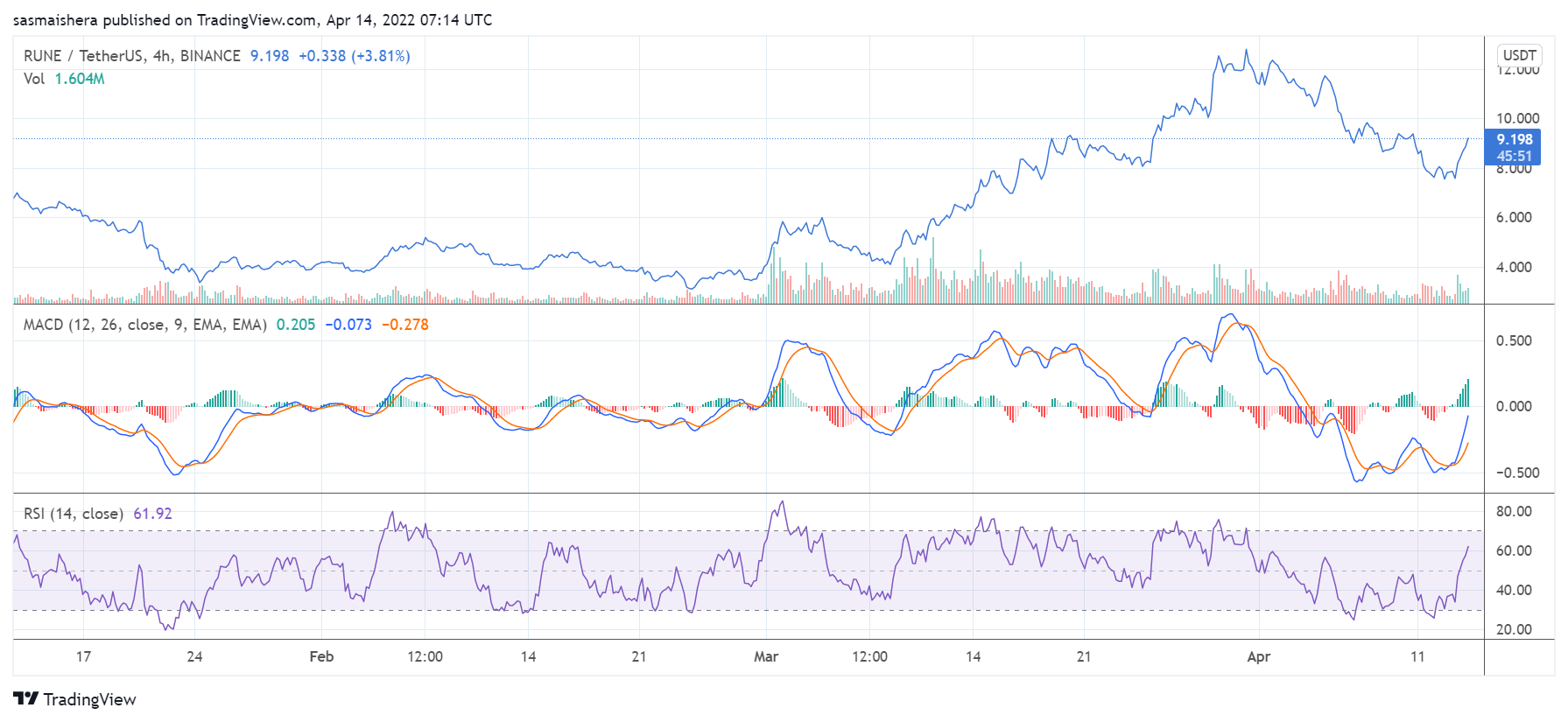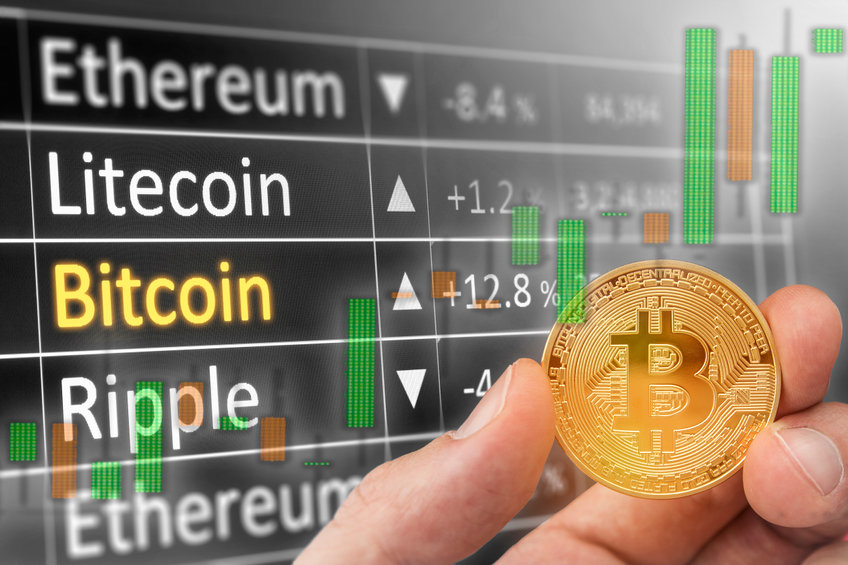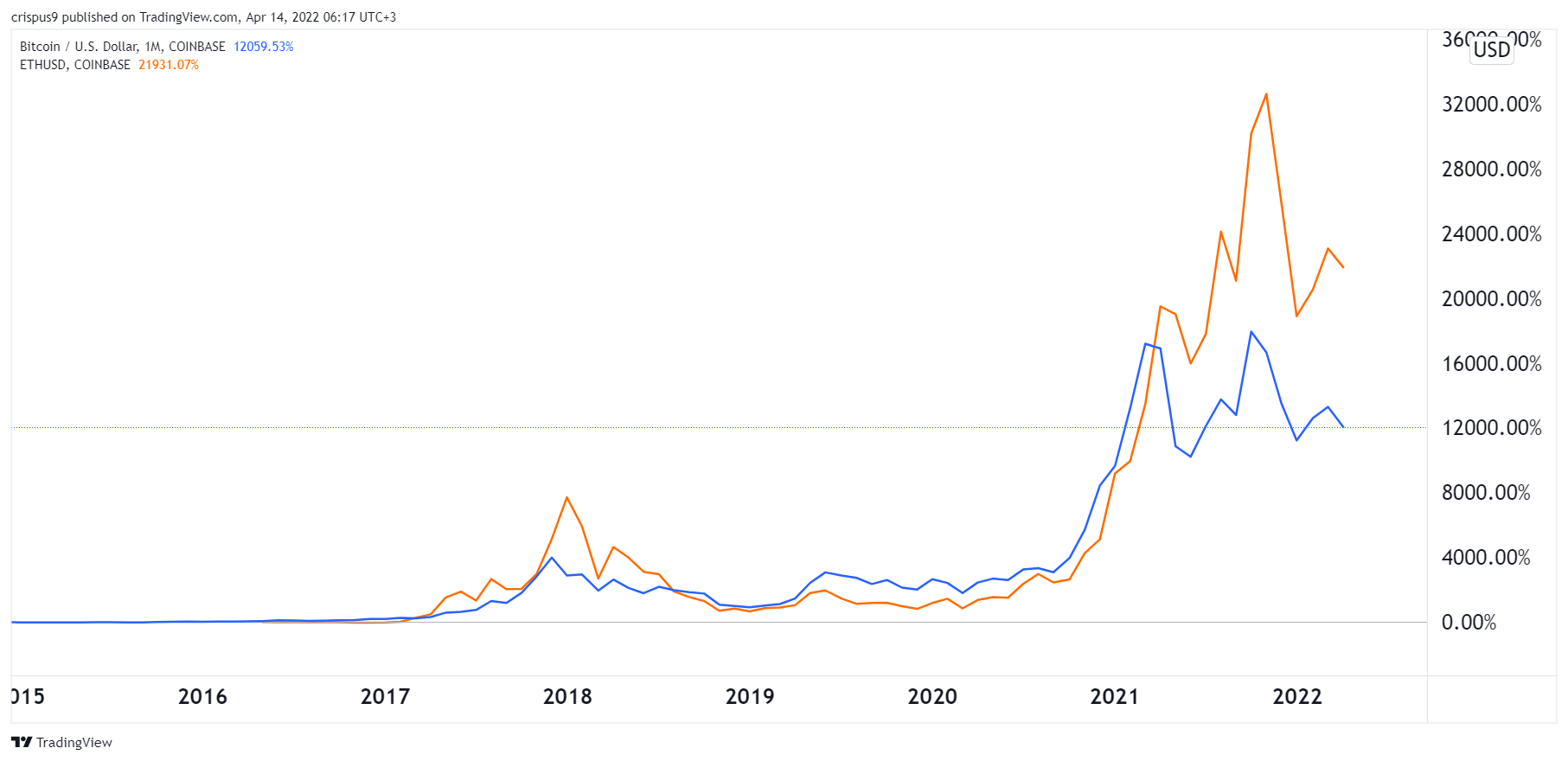
RUNE is one of the best performers amongst the top 50 cryptocurrencies by market cap.
The broader cryptocurrency market continues its recovery, adding more than 2% to its value in the last 24 hours.
Thanks to the positive performance, the total cryptocurrency market cap has surpassed the $1.9 trillion mark again and could soon reach $2 trillion.
Bitcoin is up by more than 3% in the last 24 hours and now trades above $41k per coin. If the positive momentum persists, Bitcoin could surpass the $43k resistance level soon.
However, RUNE, the native token of the THORChain ecosystem, is the best performer amongst the top 50 cryptocurrencies by market cap. RUNE is up by 19% in the last 24 hours, outperforming the other major cryptocurrencies.
The primary catalyst behind RUNE’s ongoing rally is the recent report by Delphi Digital highlighting the growth of the THORChain network over the past few months.
According to the report, the trading volume and total value locked (TVL) on decentralised finance (DeFi) projects on THORChain reached $162M and $549M, respectively in March.
The figures were both all-time highs, indicating the growth of the blockchain in recent weeks.
Key levels to watch
The RUNE/USDT 4-hour chart is one of the most bullish amongst the top 50 cryptocurrencies by market cap. The technical indicators show that RUNE could experience further gains in the coming hours.
The 14-day relative strength index of 59 shows that RUNE is moving towards the overbought territory. The MACD line is above the neutral zone, indicating bullish momentum.
At press time, RUNE is trading at $9.1 per coin. If the bulls remain in charge, RUNE could surpass the first major resistance level at $10.795 before the end of the day.
However, it would need the support of the broader cryptocurrency market to trade above $12 for the first time since March.
The post Why is RUNE up by nearly 20% today? appeared first on Coin Journal.





